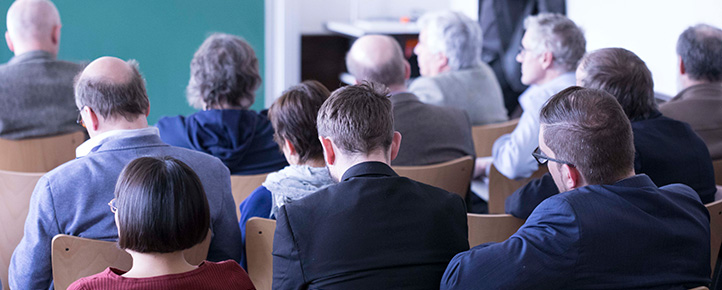Jérémie Barral: Synaptic scaling to maintain neuronal dynamics and propagate information
| When |
Dec 03, 2019
from 05:15 PM to 06:15 PM |
|---|---|
| Where | Bernstein Center Freiburg | Hansastr. 9a | Lecture Hall |
| Contact Name | Uli Egert |
| Add event to calendar |
|
Abstract
Over the past decade, there have been a number of seminal theories on the conditions for propagating information faithfully while maintaining stability in neuronal networks. Testing these theories is difficult as it requires accurate information about network architecture and precise control of the input. To overcome these limitations and test theoretical predictions, we used cultures of cortical neurons and stimulated the network using a novel optogenetic stimulation technique.
Theories suggest that the appropriate scaling of synaptic strengths with network size is crucial to preserve stability and generate in vivo-like dynamics. In a first study, we showed that synaptic strength varies nearly as 1⁄√K (K = number of connections), close to the ideal theoretical value. This result is important because this scaling law has been assumed by major theoretical models but lacked any experimental demonstration. Using optogenetic techniques, we then delivered high spatiotemporal resolution stimuli to neurons within the network to show that the neuronal dynamics that was predicted by theory hold even under conditions far from ideal limits. These results – obtained in generic cultures, predicted by theory and observed in the intact brain – suggest that the synaptic scaling rule and resultant dynamics are emergent properties of networks in general.
Information can be represented as the average number of action potentials per unit time (rate coding) or by the precise timing of action potentials (temporal coding). To study what type of information is propagated in a network composed of several connected layers of neurons, we combined microfabrication techniques with neuronal culture to build multilayer networks in vitro. We optogenetically activated neurons from the first layer and identified the conditions to transmit the input. In the first layer, a brief stimulus with different temporal precisions resulted in the modulation of the firing rate. Whereas temporal information was better preserved in networks of low density, dense networks could propagate firing rate information. These results indicate that both temporal and rate information can be propagated in multilayer networks, depending not only on the input but also on network architecture and cell density.
More about the speaker and his research:
Institut de l'Audition | Institut Pasteur | Paris


